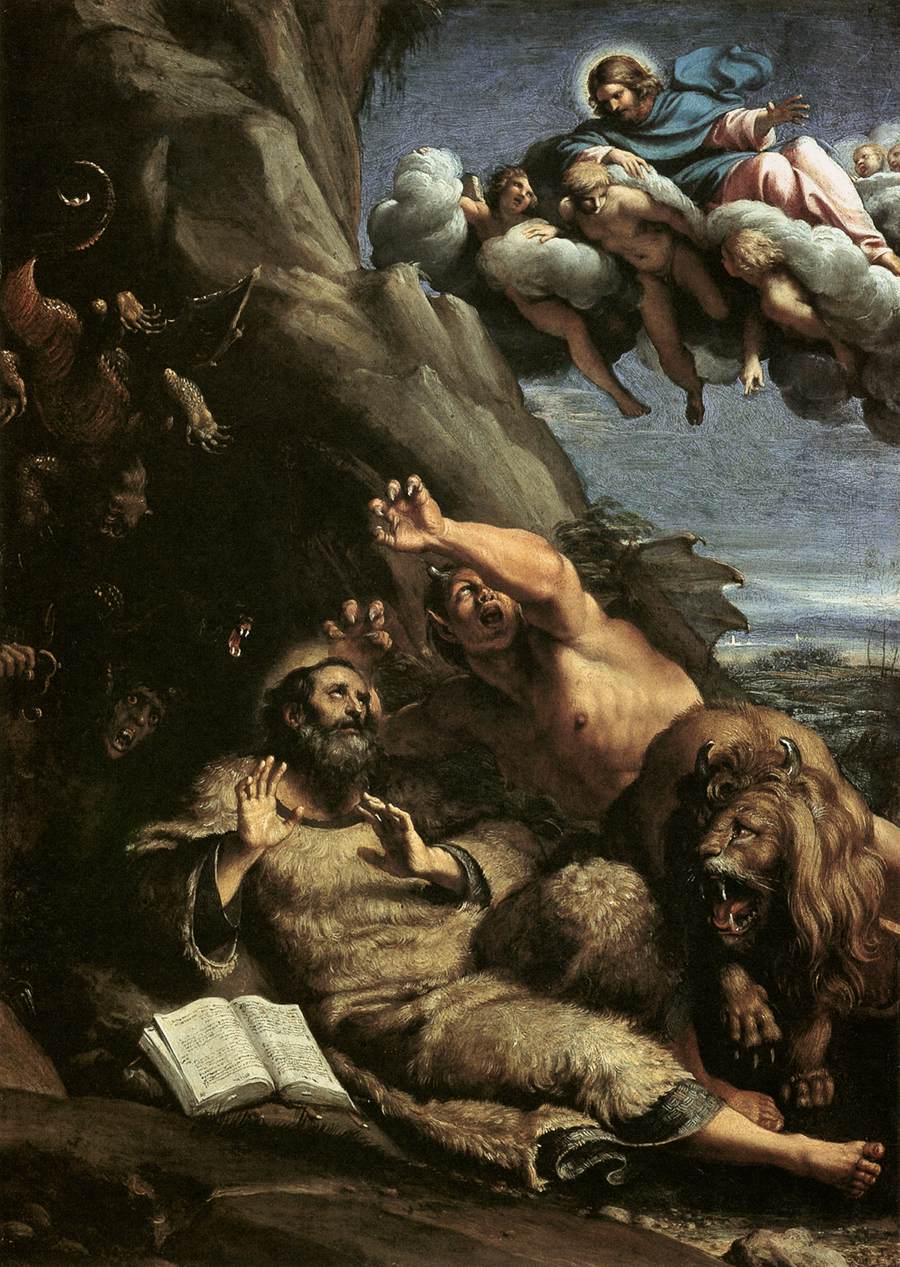Description
The painting "The Temptation of St Anthony Abbot" by Annibale Carracci is a masterpiece of Italian Baroque art of the 17th century. The work represents the saint in the desert, being tempted by demons and fantastic creatures. The composition of the work is impressive, with a great amount of details and elements that are intertwined in a complex narrative. The figure of the saint is in the center of the composition, surrounded by a large number of demons and creatures that besiege him.
The artistic style used by Carracci in this work is a mixture of classical and baroque elements. The figure of the saint is realistically represented, with a great amount of detail in his anatomy and in his facial expression. Demons and fantastic creatures, on the other hand, are depicted in a more stylized and dramatic manner, with a great deal of movement and energy in their forms.
The color used in the work is very interesting, with a lot of dark and gloomy tones that give a sense of tension and danger. Demons and fantastic creatures are depicted in bright shades of red and orange, which contrasts sharply with the dark background of the work.
The history of the painting is interesting, as it was commissioned by Cardinal Odoardo Farnese in the 17th century. The work was one of the first Carracci performed for the Farnese family, and it became one of the most famous and recognized of his career.
A little known aspect of the work is that it was influenced by 16th century Flemish and Dutch painting. Carracci studied these works during his youth in Rome, and the influence of artists such as Hieronymus Bosch and Pieter Bruegel can be seen in the composition and in the fantastical creatures featured in the work.
In short, "The Temptation of St Anthony Abbot" is a masterpiece of Italian Baroque art, with a complex and detailed composition, an interesting art style, and vibrant and dramatic coloring. The history of the work and its influences are also very interesting and make this painting one of the most important and significant of the 17th century.

